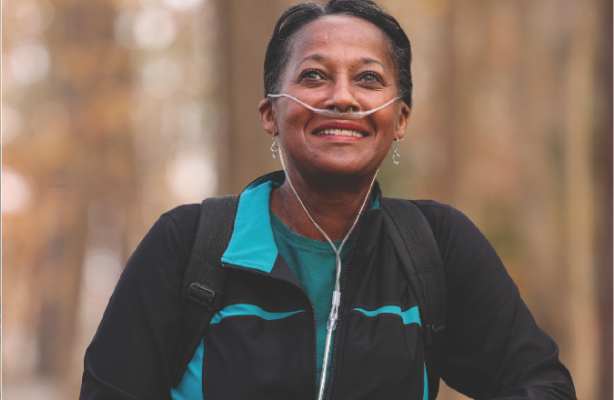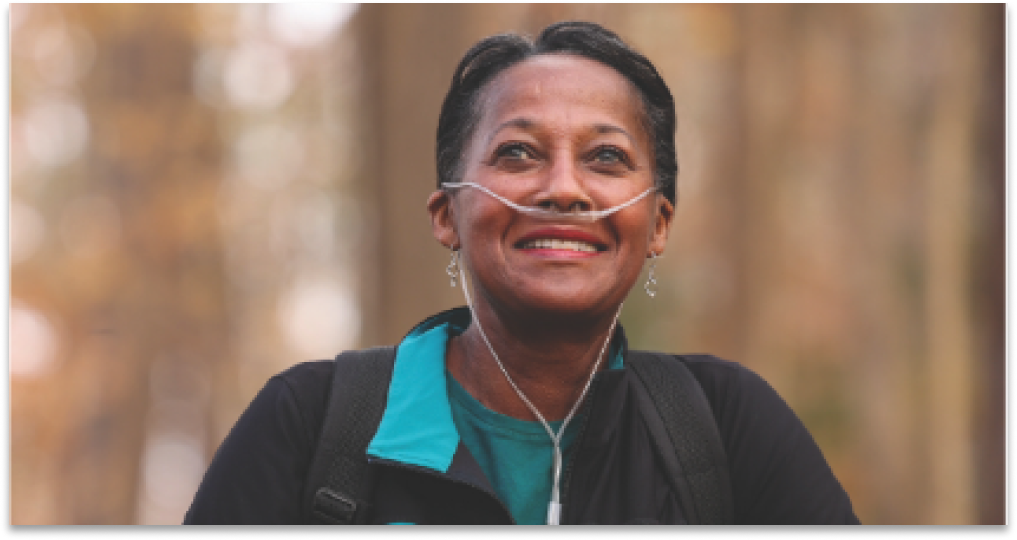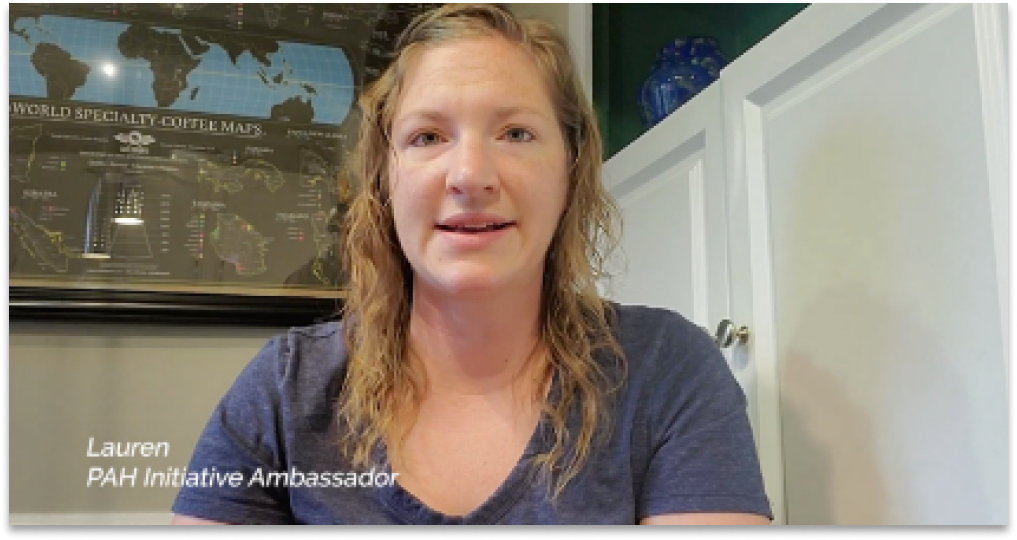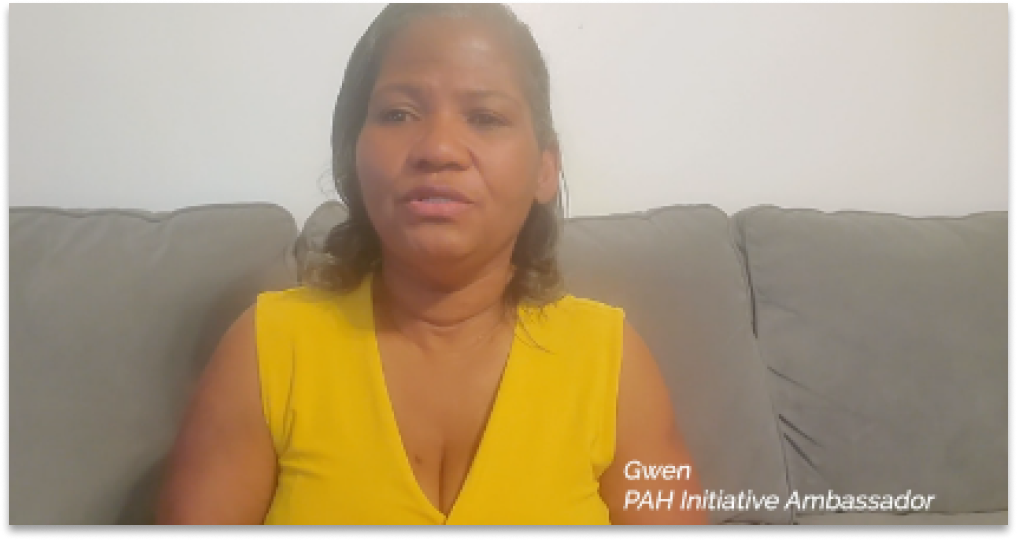
Peggy loved tennis. She was at her happiest on the hard acrylic courts, a racket in hand and only a long, waist-high net standing between her and her daughter. She shared an inseparable bond with her daughter on the court, and there was nothing better than a little friendly mother–daughter competition—a competitive spirit that runs in the family.
In fact, Peggy has always done a range of activities and exercise in general, such as walking, doing yardwork, or lifting weights at her local gym.
Over time, those exercises had become increasingly difficult. She couldn’t pinpoint a specific time, but Peggy felt something was off when she found herself taking deeper breaths and feeling like she was running out of air often. She couldn’t compete with her daughter in tennis like she used to, and boy, did she love winning against her.
In 2017, she started having shortness of breath while exercising and doing any physically intensive activities. While she thought it was odd, she stopped playing tennis but continued to experience a shortness of breath while doing something simple, like going up and down the stairs. That’s when she became worried.
Her concern brought her to an emergency doctor to receive an echocardiogram (echo) exam. She explained to the doctor that she didn’t have any additional symptoms other than shortness of breath, but that was enough to warrant her visit. Her echo in the emergency room elicited concern for a suspected diagnosis of pulmonary arterial hypertension (PAH).
Peggy, 59 at the time, was referred to a pulmonologist who specializes in PAH to run a right heart catheterization test a few weeks following her ER visit. Her suspected diagnosis of PAH was confirmed. She had always tackled any challenge life threw her way head-on, and while this one wasn’t expected, she was relieved to have an answer to what was happening to her. She started two PAH medications and worked with her doctors in the weeks and months that followed to ensure her PAH was effectively treated.
When she was told she’d need to be on oxygen, she didn’t remember feeling apprehensive about starting it. She saw it as a part of her treatment plan that would help her rather than hurt or get in the way of her daily life.
“I had no doubts about it because I needed it,” she recalls. “Adjusting wasn’t bad because it helped me breathe and made things easier for me.”
Peggy’s positive mindset stems from her trust in her doctor. That trust helped her make the mental adjustment to seeing oxygen as something that was helping her rather than getting in her way.
One common stigma about being on oxygen is that it can prevent those living with PAH from living an active lifestyle. Sure, she couldn’t do as much as she could before, but that wouldn’t stop Peggy from finding new activities to fall in love with.
Peggy keeps several oxygen units in her garage, one in her car, and one that she takes with her to places she knows she’ll be walking a lot, such as the gym or the mall. With the help of her treatments and with permission from her doctor, Peggy slowly got her way back into walking. She’d go for walks at a local track, eventually meeting her daughter there to exercise.
On one occasion, Peggy and her daughter exchanged their goals for the day. Of course, Peggy loves competition—even more than that, she loves proving people wrong. So, rather than simply meeting her goal for the day, she went and surpassed it, and she was proud just to be able to try and compete alongside her daughter. Peggy might not be able to play tennis anymore, but she found a new way to compete, even if it was more with herself than her daughter. Peggy’s experience with PAH may be different than others, as everyone’s adjustment is unique.
Now, Peggy maintains what she describes as a “wonderful” relationship with her healthcare team—her doctor doesn’t “sugarcoat” anything. She trusts all of her doctor’s treatment advice, including adjusting her oxygen units to three recently after starting with two units at the time of her diagnosis, in accordance with her doctor’s recommendations.

Since her diagnosis in 2017, Peggy has learned a lot about PAH, much of it through her own research and talks with her doctor. But she wasn’t the only one learning—her support system was learning right beside her, opening their eyes and ears to what their friend, colleague, sister, or mother was going through. The support means the world to Peggy, who often gets the question, “What is PAH?” She always responds with a smile and an answer in simple terms.
She considers oxygen a “part of” her body, so to speak. She often even forgets she has it with her, as it’s become second nature. She remembers a time she went to the movies with her son; she was carrying her oxygen tank around that had a decorated covering on it when she noticed a man, probably around her age, she recalls, staring directly at her.
“I was like, ‘Why is he looking at me?’” She laughs. “He was staring right at me, and it took me a minute to realize why.” The reason? Well, it wasn’t because she was carrying around an oxygen tank in a movie theater. It was because she was carrying around the same decorated oxygen tank covering as he was.
It’s stories like those that remind Peggy how small of a world we live in, and how she is never alone. It also reiterates her thought that she, and all PAH patients, shouldn’t let little things bother her—little things such as worrying about whether people are staring at her. Part of incorporating oxygen into Peggy’s daily activities means she has to become comfortable in welcoming a new part of her into her life and even showing it off by getting a decorative cover. Because you never know—you might make a new friend in a movie theater.
Today, she enjoys many of the same activities she participated in before her diagnosis, setting goals along the way and adjusting as needed. She considers herself very independent and wants to keep it that way, challenging herself to stay active. Her message to other patients is: “Don’t let this condition define you—and welcome the change.”
“PAH is just the beginning of your journey,” she says. “There is so much more we can do, and we won’t let carrying an oxygen tank define us.”
PAH is a complicated disease that can be difficult to understand. We've broken it down for you with easy-to-understand information, simple graphics, and informative videos from a PAH specialist.
What is PAH?
Learn how Peggy renewed her competitive spirit after her PAH diagnosis and how she won't let an oxygen tank define her.
Competitive Spirit with PAH ⟩
How has knowing their risk status helped Lauren and Karen better understand if their treatment plan is working?
Knowing your PAH Risk Status ⟩
Living with PAH can be a big adjustment and taking care of yourself can make a big difference. But where do you start?
Self-Care and Healthy Living ⟩